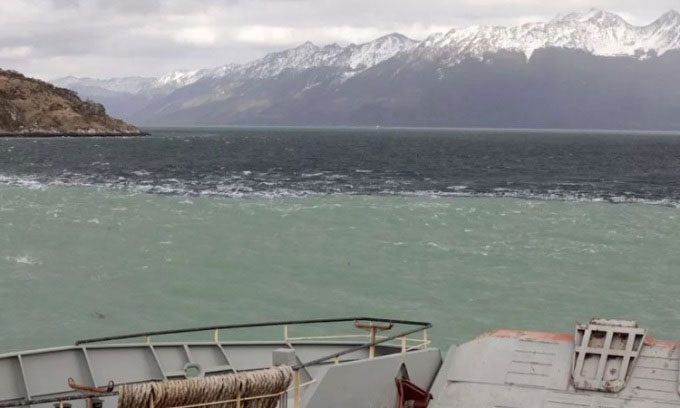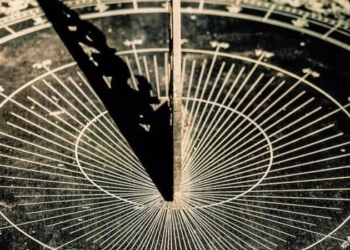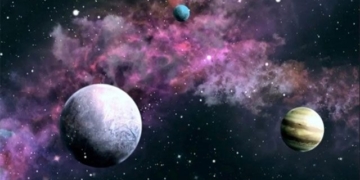At the point where the Pacific Ocean meets the Atlantic Ocean, there exists a distinct boundary characterized by differing water colors on either side due to variations in salinity, temperature, and chemical composition of the seawater.

The meeting point of the Pacific and Atlantic Oceans at the Beagle Channel in Tierra del Fuego, Chile. (Photo: Dea).
According to Nadín Ramírez, a marine biologist at the University of Concepción in Chile, the waters of the Pacific and Atlantic Oceans do not completely separate but mix at different rates in various locations. This process is similar to how cream dissolves in a cup of coffee, with the two liquids blending slowly. At the confluence of the two oceans in the Beagle Channel in Tierra del Fuego, Chile, the Pacific waters appear dark blue, while the Atlantic waters take on a brighter green hue. Because the seawater on one side may be saltier, cleaner, or colder, these differences require time to neutralize. Strong winds and large waves can accelerate this process, much like how cream dissolves faster in coffee when stirred vigorously.
The mixing of the Pacific and Atlantic Oceans occurs more rapidly in certain areas than others. The two oceans converge near the southern tip of South America, which is dotted with numerous small islands. Among these islands, the water moves relatively slowly, and the Strait of Magellan serves as a popular route through the cluster of islands. Where the strait meets the Atlantic, there is a dividing line in the middle. The Pacific seawater has a distinct color due to higher rainfall and lower salinity. However, the waters only remain separate for a time before storms and waves blur the boundaries.
Seawater also mixes at greater depths. Daily tides pull water back and forth over the rugged seabed, according to Casimir de Lavergne, a researcher at Sorbonne University and the French National Centre for Scientific Research (CNRS). This causes significant turbulence. However, water from different sources can move around the ocean without mixing. The ocean consists of various layers of water, each with unique characteristics depending on the source. In the layer of water situated between the surface and the seabed, mixing occurs very slowly due to minimal turbulence.
Researchers distinguish between the concepts of mixing and water exchange. “Mixing means that the water is permanently altered and cannot return to its original state. But you can exchange two bodies of water without changing their properties,” Lavergne explains. Due to global ocean currents, the Pacific and Atlantic Oceans frequently exchange water.
A strong current around the Southern Ocean at Antarctica pulls water clockwise around the Drake Passage from the Pacific to the Atlantic. It also draws water from ocean basins, which is then pumped back. Another current moves water from the Pacific through the Indian Ocean and around the Cape of Good Hope to pump it into the Atlantic from the opposite direction. Water continuously mixes at the edges of these currents. However, due to the layers of water appearing to blend completely, marine scientists can track these water masses as they move globally.





















































